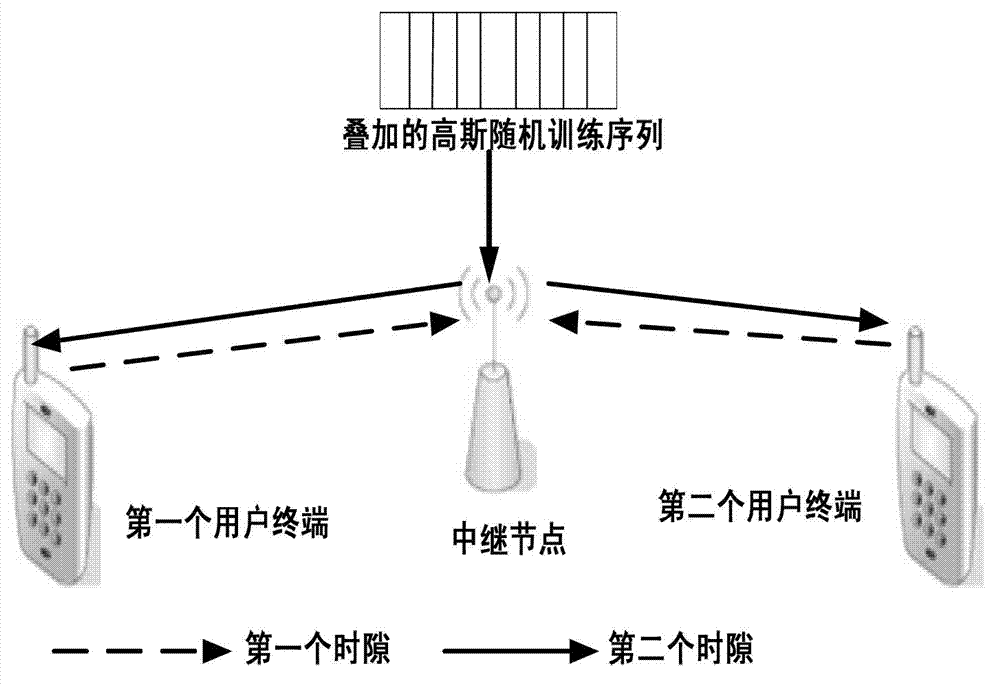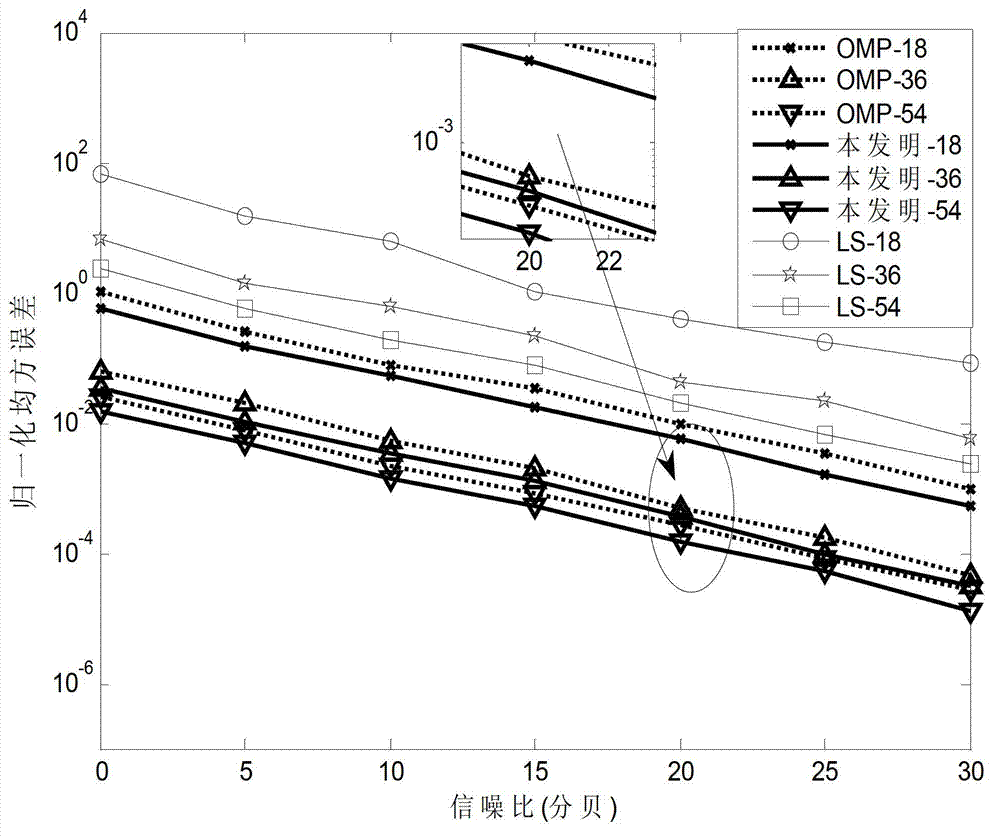Compressed sensing based sparse channel estimation method in two-way relay network
A two-way relay and sparse channel technology, which is applied in the field of channel estimation, can solve the problems of excessive use of energy and bandwidth, failure to consider the potential sparse characteristics of two-way relay channels, and reduce the efficiency of channel estimation, so as to improve the utilization rate of energy and bandwidth , reducing the Gaussian random training sequence, improving the effect of accuracy and robustness
- Summary
- Abstract
- Description
- Claims
- Application Information
AI Technical Summary
Problems solved by technology
Method used
Image
Examples
Embodiment Construction
[0015] The present invention will be further described in detail below in conjunction with the accompanying drawings and embodiments.
[0016]A sparse channel estimation method based on compressed sensing in a two-way relay network proposed by the present invention, which specifically includes the following steps:
[0017] ① Assume that the figure 1 The most typical two-way relay network based on the amplification and forwarding protocol is shown for sparse channel estimation. There are two user terminals and one relay node in the two-way relay network, and the relay node and each user terminal have only one antenna . In practical applications, other forms of two-way relay networks can also be used for sparse channel estimation, and the most typical and simplest two-way relay network is selected here for the convenience of description.
[0018] ②In this two-way relay network, the first user terminal sends a Gaussian random training sequence X in the first time slot 1 to the...
PUM
 Login to View More
Login to View More Abstract
Description
Claims
Application Information
 Login to View More
Login to View More - R&D
- Intellectual Property
- Life Sciences
- Materials
- Tech Scout
- Unparalleled Data Quality
- Higher Quality Content
- 60% Fewer Hallucinations
Browse by: Latest US Patents, China's latest patents, Technical Efficacy Thesaurus, Application Domain, Technology Topic, Popular Technical Reports.
© 2025 PatSnap. All rights reserved.Legal|Privacy policy|Modern Slavery Act Transparency Statement|Sitemap|About US| Contact US: help@patsnap.com



